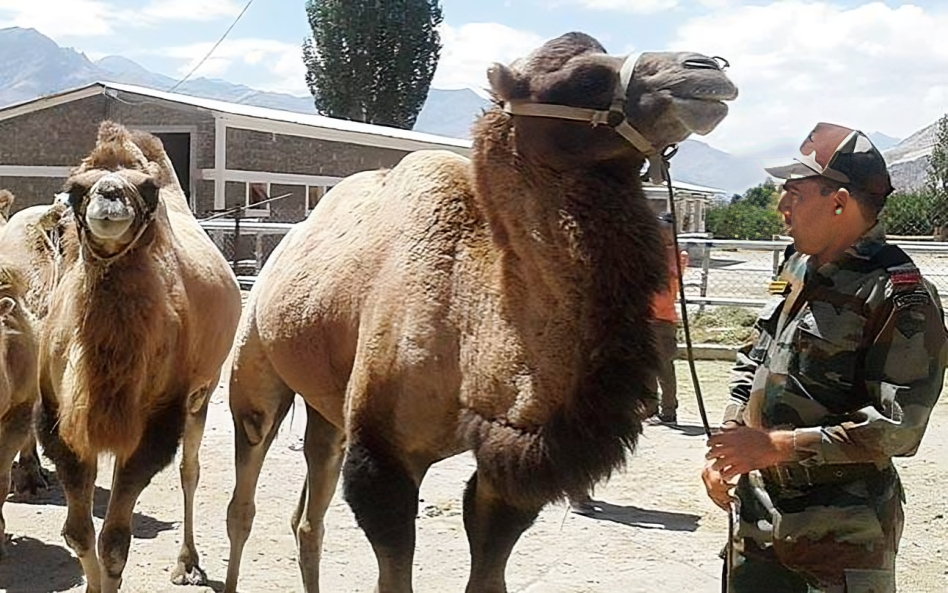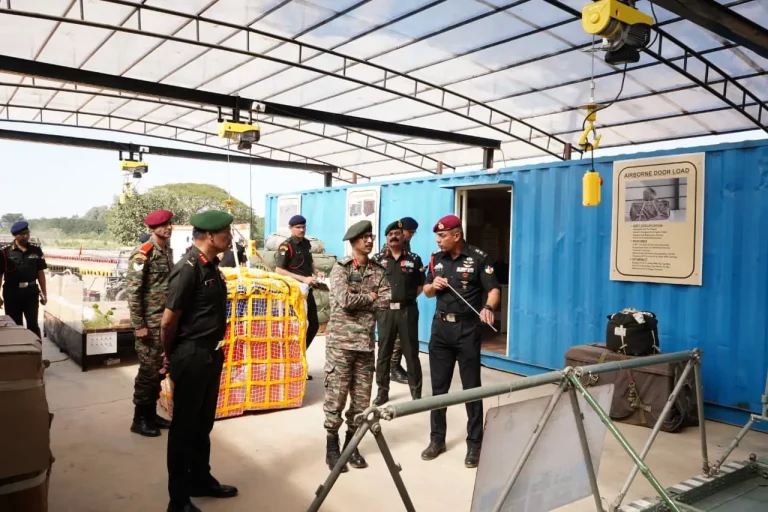In a significant development for the Indian Army, Bactrian camels, a hardy species known for their dual humps and native to Ladakh, have been formally inducted to aid in patrolling and logistics in the high-altitude region. This transition comes after nearly a decade of meticulous research and field trials aimed at assessing their effectiveness in extreme conditions.
Recently, the Defence Institute of High Altitude Research (DIHAR), a lab under the Defence Research and Development Organisation (DRDO) located in Leh, handed over fourteen trained Bactrian camels, accompanied by standard operating procedures and health records, to the Army’s 14 Corps. These camels have been specifically conditioned for operations in challenging terrains where traditional transport options are often inadequate.
Despite ongoing road development in Ladakh, gaining access to remote posts remains a formidable challenge, heavily reliant on porters and pack animals. While the military is also exploring the use of drones and mechanical mules for supplies, these technologies often struggle due to poor visibility and harsh weather conditions. In contrast, Bactrian camels present a more dependable alternative for navigating such harsh landscapes.
The research initiative, which commenced in 2016, involved collaboration between DIHAR and the Army’s Remount and Veterinary Corps. The focus was on evaluating the camels’ physiological adaptations, load-carrying capabilities, and behavior in simulated battlefield conditions, which included exposure to gunfire, blasts, and operational stress.
Bactrian camels have shown impressive capabilities, able to carry loads ranging from 150 to 200 kg at altitudes reaching 14,000 feet, significantly surpassing the load capacities of traditional mules and ponies, which can only manage between 60 to 80 kg. Additionally, these camels require less nutritional upkeep and are ideally suited for two-man patrols in rugged mountainous territories.
For a comprehensive performance analysis, DIHAR also examined the effectiveness of desert camels sourced from Rajasthan, which are traditionally employed by the Border Security Force in western India. However, the Bactrian camels stood out for their superior performance in high-altitude environments.
Scientifically known as Camelus Bactrianus, these camels previously played a crucial role in facilitating trade along the Silk Route. Currently, they exist in limited numbers primarily in the Nubra Valley, where they are recognized as an endangered species. Beyond their military use, these camels are also integral to the tourism sector in Ladakh.
In a parallel effort, the Indo-Tibetan Border Police is considering the integration of these resilient animals into their own operations within similar terrains, further underscoring the versatility and importance of Bactrian camels in challenging environments.
















